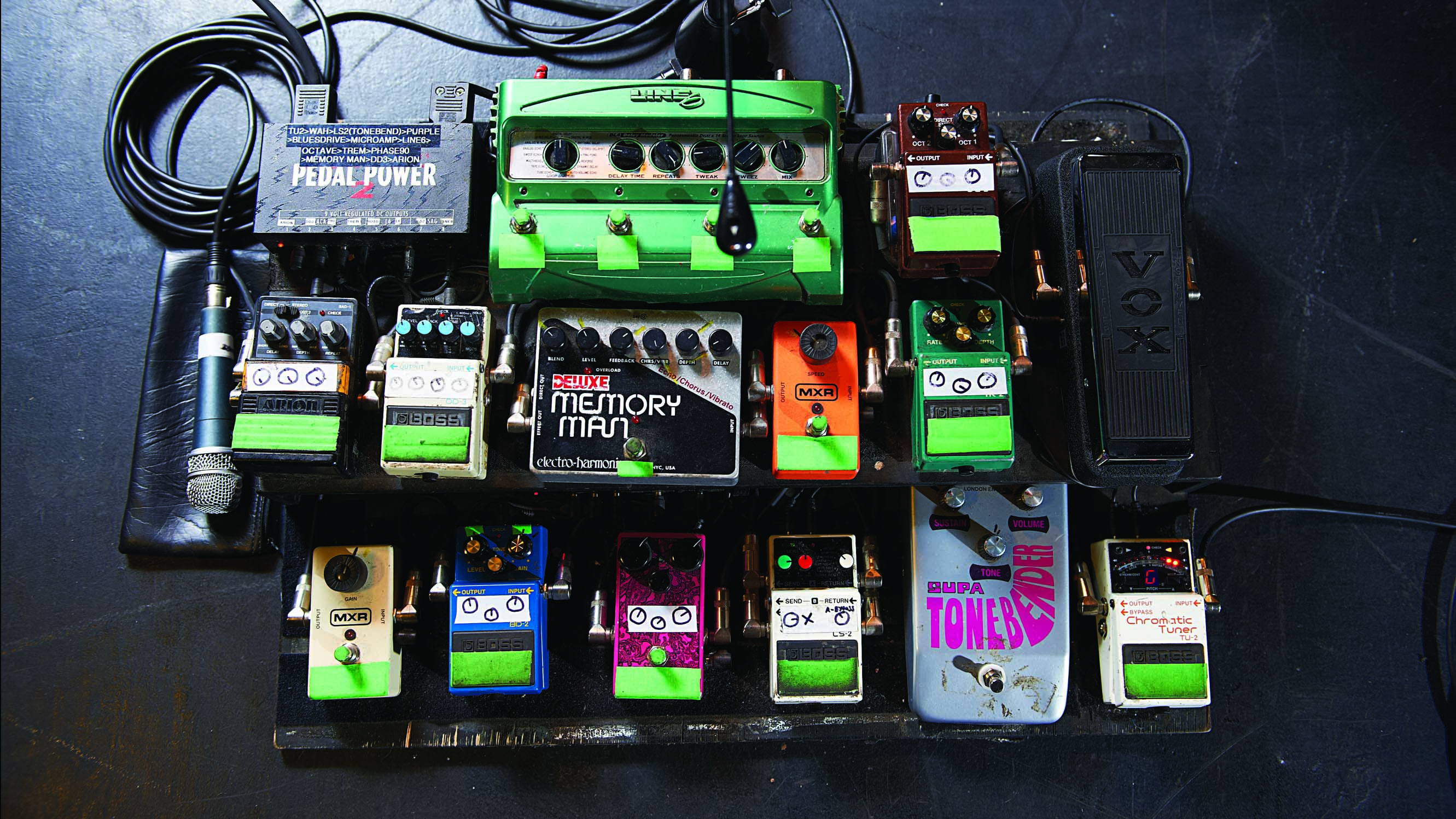
In our effect pedal reviews, the specs will refer to whether the unit has true-bypass or buffered, and some digital pedals can ever give you the option; but what is the difference and why can it matter?
First we need to define true and buffered bypass.
A buffer is a 1:1 amplifier that changes the impedance of your signal. It’s there to counteract what happens with the interaction of various physical factors in your signal chain: inductance in your pickups, plus capacitance and resistance in cables, pedals, switches etc. The common terminology is that buffers ‘drive’ the signal, minimising signal loss.
Not all effects pedals are buffered when they’re turned on. However, it’s when they’re off that potential issues arise that you might need to consider (leaving aside fuzz pedals which we’ll come to in a bit). This is where true-bypass comes in.

True bypass is when there is no buffer when the pedal is off. Whereas buffered bypass is when a buffer is in operation even when the pedal is off. Now there's a misconception amongst some players that buffered is bad and true-bypass is best. But buffered isn't necessarily a bad thing at all. The world's most eulogised overdrive pedal, the Klon Centaur, for example, is a buffered bypass pedal.
A distinct advantage of true bypass is it's a failsafe if something goes wrong with the pedal's power. On a true bypass pedal the input is hardwired to the output when the effect is off. So the signal will still pass through the pedal even if it's power goes down.
I use a selection of true-bypass pedals. Do I need a buffer?

There's no simple answer to this – sorry. Some trial and error is needed to determine if you need a buffer. Plug everything in, leave all the pedals off and just play for a bit. Now, change nothing except for unplugging the cable from the ’board to the amp and plug your guitar straight in instead. Listen carefully and repeat as necessary. If there’s a difference then you’re experiencing some signal loss.
Want all the hottest music and gear news, reviews, deals, features and more, direct to your inbox? Sign up here.
This varies with cables, guitars etc, but is most noticeable with vintage-style pickups that tend to suffer when trying to ‘drive’ a lot of capacitance (a pedalboard filled with effects). A buffer could help in this case, but so could cleaning up your signal path with a loop switcher, and/or improving your pedal power supply solution.

A strongly buffered signal will have noticeable fidelity, edge and presence that’s neither a good nor bad thing
Now repeat that process using one pedal at a time, and then using combinations of two pedals. We know, it’s laborious, but it should help you understand if and where the tone is being changed.
The most obvious difference will be in the nature of the high-end; a strongly buffered signal will have noticeable fidelity, edge and presence that’s neither a good nor bad thing. That said, a buffer can be a key part in somebody’s tone, such as Angus Young’s.
The general advice is:
1. If you want to add a buffer, it’s usually best placed after your drive pedals.
2. Vintage-style fuzzes (Germanium fuzzes especially) tend not to like buffers in front of them.
3. Buffers after overdrive and fuzz can have an effect too, so be aware of that.
4. Once you understand what the buffer is doing to the sound, you can use it to your advantage: there is no good, bad, right or wrong!
Signal chain advice

These are generalisations only. Nobody needs an additional buffer but you might want one if your sound requires some strength, edge and brightness. Adding a buffer affects the whole resultant sound, but where you place it will affect each individual pedal differently.
Delays and reverbs
These time-based effects are not usually not a big issue with buffers unless you want to keep a very dark or analogue sound. True bypass pedals can be buffered before or after to taste. Buffered bypass pedals shouldn’t need additional buffers.
Buffered overdrives
Can work well placed as the last OD in your chain, keeping its buffer after all the other fuzz or drive, but before your delay and reverb. Can make fuzzes sound harsh. Could create a conflict placement with your modulations.
Modulation
True bypass pedals can gain clarity with a buffer afterwards. Buffered bypass pedals can cause issues for drives placed after.
True bypass OD
A buffer before can brighten or add edge, but the buffer is usually better placed after drives. Overdrives tend to like seeing your guitar, not a buffer.
Vintage-style fuzz
Usually hate buffers before them. Germanium fuzzes usually need to be first after the guitar. Brighter or harsher with a buffer after.
Guitarist is the longest established UK guitar magazine, offering gear reviews, artist interviews, techniques lessons and loads more, in print, on tablet and on smartphones
Digital: http://bit.ly/GuitaristiOS
If you love guitars, you'll love Guitarist. Find us in print, on Newsstand for iPad, iPhone and other digital readers


